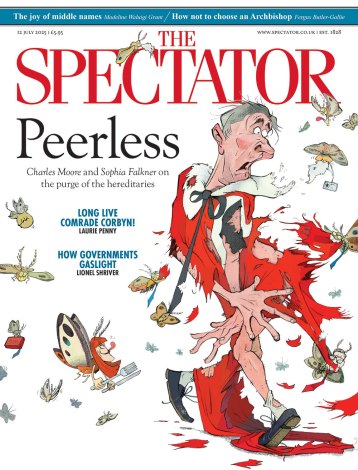The bearded figure clad in white robes and wandering barefoot through the streets of Jerusalem is not, in fact, the messiah. But neither is he a very naughty boy. Rather, he is a middle-aged man from Texas in need of a shower who, like the German across the street claiming to be Saint Paul, is caught in the grip of Jerusalem Syndrome — first clinically described in 1937. The afflicted are visitors so struck by their encounter with the city they become convinced they are ‘prophets, messiahs or redeemers. They can no longer distinguish between reality and fevered imagination.’
These are extreme cases, but they might be better thought of as extreme symptoms of a gentler, everyday blurring of reality and imagination that occurs when exploring Jerusalem, a city built from scripts and mortar. T.E. Lawrence in 1917 caught the feeling well: the ‘forces of the past and the future were so strong that the city almost failed to have a present’. Almost, but not quite; for it is from such a blurred present that the historian Merav Mack and the critically acclaimed writer Benjamin Balint explore the history of Jerusalem’s libraries and map the terrain between the real Jerusalem and the one dreamed of by the countless communities of the city bound through time by a ‘reverence for the written word’.
Part of the charm of their book is the fact that, as the authors travel from archive to archive, they try to ‘experience Jerusalem like a Jerusalemite’. This is not a city you experience chronologically, but chaotically: ‘It involves discovering the ways that overlapping layers of memory, joined and jumbled with imagination… often overwhelm the present.’ This approach gives the prose both a reverential quality and a hectic, gleeful energy. It can also give the reader vertigo, with odd gaps between paragraphs as we leap excitedly in another direction. And for those of us whose 14th-century Judean history is a little rusty, it can be tricky to keep hold of the chronology of underlying events. Yet there is still plenty here to amaze the reader.
Jerusalem deals heavily in rare manuscripts, but it is itself that rarest of books: an academic work that fuses dense scholarship with the surreal intrigue of a Borgesian story and the derring-do of a Boy’s Own adventure. It makes for a scholastic thriller stuffed full of ghost scrolls, forgeries, buried texts and thieving bishops.
Rather than a strict argument it is a collection of stories united by the spirit of discovery. Take, for example, the authors’ exploration of Jewish genizahs. These are hidden rooms in synagogues which serve as repositories for any discarded manuscripts that bear the name of God. They would include texts with scribal errors but also, tantalisingly, heretical texts lost to the outside world.
Or take their visit to the municipality building on Safra Square that houses an absurdly accurate 1:500 scale model of the city, which has been continually updated since 1978 in order to give architects, planners and developers a space to test ideas. Here the imagined city foreshadows its future reality.
Most impressive of all, however, is the authors’ sheer perseverance. It took two years of negotiations to be granted access to the Greek Orthodox library; and to visit the Ethiopian Orthodox library ‘even an audience with Jerusalem’s archbishop and repeated meetings with his monks would not suffice’. In the end they had to travel to Addis Ababa to secure the patriarch’s written permission in person. Why such obduracy? Mack and Balint explain it as a combination of embarrassment at the poor state of precious collections and the paranoid legacy bequeathed by the manuscript-hunters of the 19th century (and beyond).
And yet another reason suggests itself in the closing chapters. If some texts are hidden because of their sacred status, others are hidden because of the knowledge they offer. Strands of Islam, Judaism and Christianity recognise that, as the Sufi scholar Ibn ’Arabi noted, ‘for every knowledge there are people suitable for it’. Preparation and timing are key.
The knowledge held in the pages of Jerusalem has been accrued over centuries: it is a knowledge that has survived burnings and burials, a knowledge that has been hard won, yet remains humble in its privacy, its quiet confidence that those prepared to search shall find it. It’s a book that will similarly enlighten any visitor who cares to seek it out.






Comments